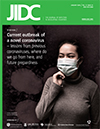The Factors associated with the unsuccessful tuberculosis treatment of hill tribe patients in Thailand
DOI:
https://doi.org/10.3855/jidc.12029Keywords:
Tuberculosis, Hill Tribe, Treatment success, TB Treatment, MinorityAbstract
Introduction: Tuberculosis (TB) remains a serious public-health problem worldwide. The successful tuberculosis treatment was in low rate among the hill tribes in Thailand. This study aimed to determine factors associated with the unsuccessful tuberculosis treatment among the hill tribe TB patients in northern Thailand.
Methodology: A retrospective cohort study was conducted using secondary data from the national TB reporting system. Data of newly registered hill tribe patients with TB receiving treatment were obtained from 18 government hospitals in Chiang Rai province, during 2014–2017. TB treatment outcomes and factors associated with unsuccessful were determined.
Results: A total of 770 hill tribe patients with TB registered during the study period. The majority were males aged 25–64 years. About 80% of the patients lived in rural areas and 53.9% worked in agriculture. The overall TB treatment success rate was 80.4%. Two factors were associated with unsuccessful TB treatment: ages 25–44 and ages 45–64 (aOR 3.14 (1.03–9.55) and 3.02 (1.01–9.03), respectively) and receiving antiretroviral drugs (proxy of HIV infection) (aOR 2.30 (1.02–5.15)).
Conclusion: Although the TB treatment success rate among hill tribe patients did not reach the national goal, it was still higher than that of other Thai TB patients in the area. In Thailand, hill tribe people can access health services free-of-charge under the national health insurance. This could influence the successful treatment. However, some barriers need to be considered, such as the high default rate and high death rate among those with HIV coinfection.
Downloads
Published
How to Cite
Issue
Section
License
Authors who publish with this journal agree to the following terms:
- Authors retain copyright and grant the journal right of first publication with the work simultaneously licensed under a Creative Commons Attribution License that allows others to share the work with an acknowledgement of the work's authorship and initial publication in this journal.
- Authors are able to enter into separate, additional contractual arrangements for the non-exclusive distribution of the journal's published version of the work (e.g., post it to an institutional repository or publish it in a book), with an acknowledgement of its initial publication in this journal.
- Authors are permitted and encouraged to post their work online (e.g., in institutional repositories or on their website) prior to and during the submission process, as it can lead to productive exchanges, as well as earlier and greater citation of published work (See The Effect of Open Access).








